The week at a glance
- Possible Atlas Flycatcher in East Yorkshire
- First twitchable Scottish Black-winged Stilt for over 20 years
- Dutch Bufflehead relocates to Lincolnshire
- Brief Laughing Gull in Gloucestershire
- Impressive falls of migrants across much of the southern half of the country
Apart from a few obvious highlights, most of April has been a struggle for patch-workers, rarity-hunters and twitchers alike. Cold, northerly-based winds played a significant role in reducing migration to little more than a trickle at times. However, the final week of the month well and truly blew away the springtime blues: although the weather was challenging to say the least, a feathered invasion advanced northwards across Britain and Ireland during the week, delivering huge numbers of common migrants. Spirits were further lifted by the simultaneous arrival of a host of scarce and rarer species and the month of May — one of the most exciting in the birdwatching calendar. Finally, things were looking up...
Although a positive identification was impossible without DNA evidence to support it, a dazzling black-and-white Ficedula photographed at Flamborough Head on 28th generated plenty of excitement across the British birding scene. Plenty of white in the wings and on the forehead has tempted many to suggest that this bird, a first-summer, could conceivably be an Atlas Flycatcher, no less. However, the lack of a widespread stampede for the East Yorkshire coastline when it was relocated on 30th tells a tale: Ficedula identification can be messy at the best of times, and many remain unconvinced that the bird is not a Pied × Collared Flycatcher hybrid. The two hybridize frequently in the overlap zone in Scandinavia and, funnily enough, an apparent example of this 'cocktail' was at nearby Filey over the weekend. Nevertheless, a mini-influx of apparent Atlas Flycatchers to the western Mediterranean over the past fortnight has added weight to the possibility. However, until those all-important DNA results are out, no-one can be sure. Who knew twitching could be so like The Jeremy Kyle Show?

Putative Atlas Flycatcher, Flamborough Head, East Yorkshire (Photo: Chris Downes)
The rest of the week's highlights featured a familiar litany of phrases that never fail to frustrate the masses. The adult Laughing Gull which flew upriver at Severn Beach (Glos) on 1st was "brief", as was the Roller seen flying towards Teignmouth at Little Haldon (Devon) the same day. The Booted Eagle over Boddam (Shetland) was never more than a "possible", nor was the Snowy Owl at Lochindorb (Highland). Just to add insult to injury, a male Scops Owl heard singing for a minute or so at Skye of Curr (Highland) during the morning of 1st turned out to be an exotic guineafowl-type giving a convincing impression!
Frustrations aside, it was actually a rather wonderful week if you cared little for chasing rarities (or getting wet). As alluded to previously, it was arguably the best week for spring migration observed over the last decade. Carried by the first breath of a southerly for what seems like weeks, birds began to flood in to the south coast from 29th, gradually working their way northwards so that sites across the Midlands, East Anglia, Wales and much of Ireland experienced a phenomenal northward rush of impatient birds until 2nd. Most numerous were Wheatears: flocks of birds littered both the coast and many suitable inland sites, with 50+ observed at several of the latter. There was also a heavy passage of Whinchats, Redstarts, Tree Pipits and Pied Flycatchers, and yet more Ring Ouzels, with warblers and wagtails also present in abundance. The often poor weather conditions also ensured that waders, gulls, and terns were on the move on a widespread front: plenty of Black Terns included over 80 past Severn Beach (Glos) on 1st. Furthermore, offshore passage of Pomarine and other skuas ensured that it was a dynamic period right across the board.

Black Tern, Attenborough NR, Nottinghamshire (Photo: Sam Viles)
Also struggling to move anywhere in the inclement conditions were remaining geese in Scotland. In Highland, the Red-breasted Goose was still with Pink-feet at Brora to 28th, and the Ross's Goose was still at Forres (Moray/Nairn) the same day. Considerably further south, the long-staying Red-breasted could still be found with 1,000 remaining Barnacle Geese on the Dumfries & Galloway side of the Solway to 1st at least.
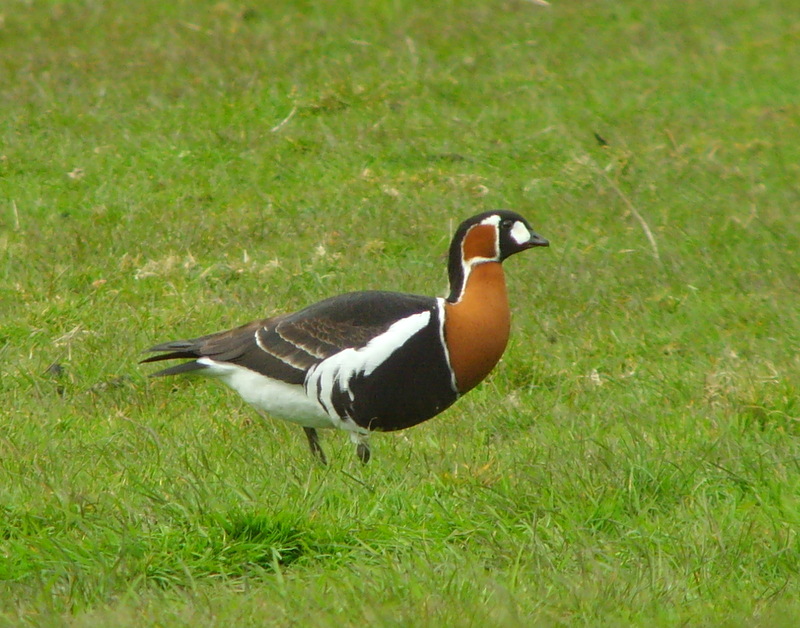
Red-breasted Goose, Brora, Highland (Photo: John Nadin)
However, the gales didn't seem to be a hindrance to one of the star finds this week. A female Bufflehead was found at Covenham Reservoir (Lincs) during the early afternoon of 27th, where it remained for the rest of the afternoon only. Although many were anticipating it to be the Cornish bird, it was found to be the bird present on the Dutch coast for a few weeks earlier in the month (details here).
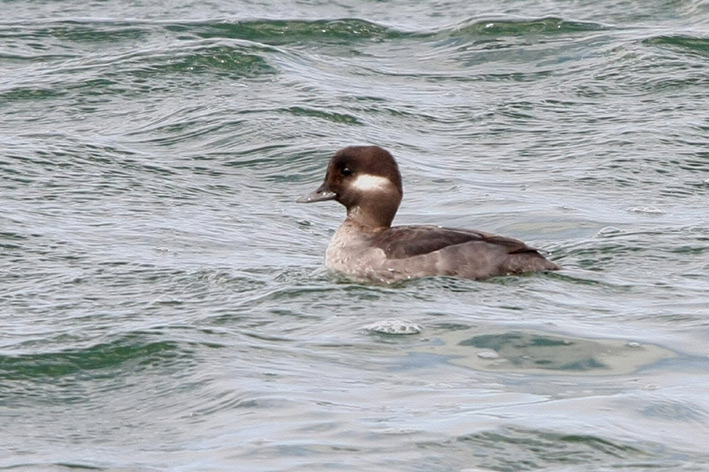
Bufflehead, Covenham Reservoir, Lincolnshire (Photo: Roy Harvey)
In South Wales, the drake Lesser Scaup refused to budge from Cardiff Bay (Glamorgan), where it was still present on 28th. Two drake Ring-necked Ducks reappeared in Aberdeenshire — this time at Loch of Skene on 28th — and a new bird was found in the Outer Hebrides at Griminish Point, N Uist on 30th. Otherwise, females were again in South Yorkshire and Norfolk while the Lincolnshire drake relocated to West Ashby once more.
Following the departure of both Scottish drakes, the long-staying female Blue-winged Teal at Walmsley Sanctuary was left to fly the flag alone. It remained throughout the week, while a Cattle Egret continued to drop in with some regularity there. Seven Green-winged Teal included a new bird at Carrigtwohill (Cork) on 27th–28th, while the Chew Valley Lake (Somerset) bird was again present from 30th.

Green-winged Teal, Blithfield Reservoir, Staffordshire (Photo: Richard Powell)
The Outer Hebrides scored a new female King Eider in the bay at Rubha Ardvule, S Uist on 1st, while the drake continued to laze around at the Ythan Estuary mouth (Aberdeenshire) all week. Surf Scoters were reduced to drakes off the traditional sites of Blackdog (Aberdeenshire) and Largo Bay (Fife).
A strong week of White-billed Diver records saw six recorded off Orkney (including twos off Rerwick Head on 29th and North Ronaldsay on 30th). Mainland birds remained off Portsoy (Aberdeenshire) and Burghead (Moray/Nairn), with a third just down the coast off Hopeman. A single record from Kirkabister (Shetland) on 29th no doubt relates to the bird that has spent many winters at and around this site.
Five of eight Cattle Egrets were new birds, and included one at Earls Barton Gravel Pits (Northants) on 2nd. Others were found at Snettisham (Norfolk) and Lodmoor (Dorset), with birds reappearing in Gloucestershire and Berkshire after lengthy absences. In contrast, a Cattle Egret at Chew Valley Lake during the morning of 2nd turned out to be the year's first Squacco Heron, which remained distant and elusive for the rest of the day. A flush of new Great White Egrets saw resplendent breeding-plumaged birds appear in East Sussex and Cambridgeshire, while the Purple Heron remained at Seafield (Waterford) to at least 27th and another flew over Broom Gravel Pits (Beds) on 2nd.

Squacco Heron, Chew Valley Lake, Somerset & Bristol (Photo: Gary Thoburn)
Tragedy struck for the now-famous flock of White Storks towards the end of the week. After appearing in the Didcot (Oxon) area on 26th, they flew around for the rest of the day before settling near Standlake to the month's end. To the horror of onlooking birdwatchers on 1st, one of the birds collided with overhead power cables and plummeted to its death just as they were climbing into the skies to continue their journey. The five remaining birds were seen along the West Sussex coastline between West Wittering and Littlehampton on 2nd. Meanwhile two further individuals — no doubt those seen in Lincolnshire last week — settled on the marshes at Acle (Norfolk) on 28th–30th, and a ninth individual was seen flying over Rookley (IoW) on 1st.
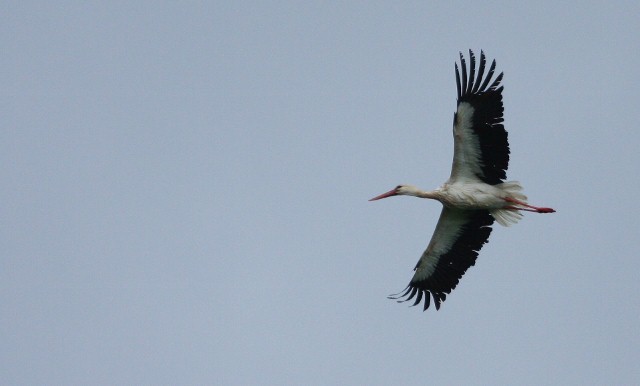
White Stork, Standlake, Oxfordshire (Photo: Sam Viles (aged 14))
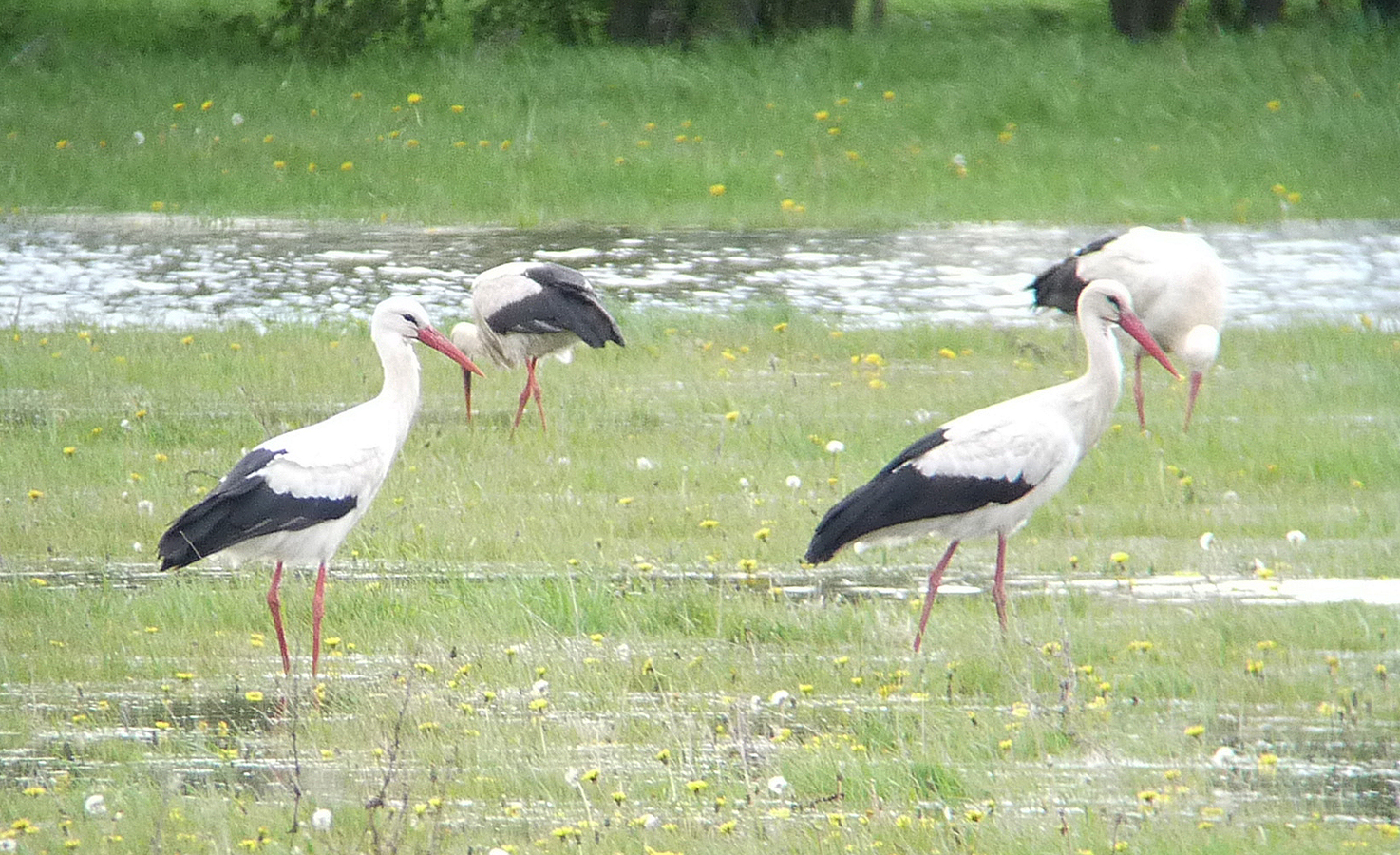
White Stork, Standlake, Oxfordshire (Photo: Steve Bell)
Three Glossy Ibises at Campfield Marsh (Cumbria) on 28th made a 270-kilometre northward hop overnight to Donmouth (Aberdeenshire), where they spent the evening of 29th and early morning of 30th before relocating to Loch of Strathbeg on 2nd. Further new birds were seen on Scilly on 27th and at Exminster Marshes (Devon) on 1st, while nine remaining individuals included the trio at Marloes Mere (Pembrokeshire) throughout.
Also in Pembrokeshire, a Black Kite was located in the valley west of Letterston on 30th. Although initially not visible in poor weather the following morning, it was seen again later in the afternoon. Another arrived with a big fall of migrants at Galley Head (Cork) during the evening of the 1st, while two Cornish records came from Trevalgan on 28th and near St. Keverne on 1st and a further Welsh report was at Llanon (Ceredigion) on 2nd.
One of the great highlights of the week — at least in a Scottish context — was the bizarre occurrence of a Black-winged Stilt on the Isle of May (Fife) from 1st. A severely lost bird, it represents the first Scottish record since a couple of one-day wonders on the Outer Hebrides in July 1990, so many will be keen to brave the boat out for this one if it lingers until the weekend. Elsewhere, it continues to be a great spring for the species: the long-stayer was still at Frampton Marsh (Lincs) until 1st, while three at Exminster Marshes (Devon) on 25th quickly split into groups of two and one, and remained around the Exe Estuary until 27th. The pair then relocated to Wrafton on 28th, with the singleton popping up at Walmsley Sanctuary (Cornwall) the same day. Finally, another bird was at Christchurch Harbour (Dorset) on 2nd.

Black-winged Stilt, Wrafton, Devon (Photo: Steve Hatch)
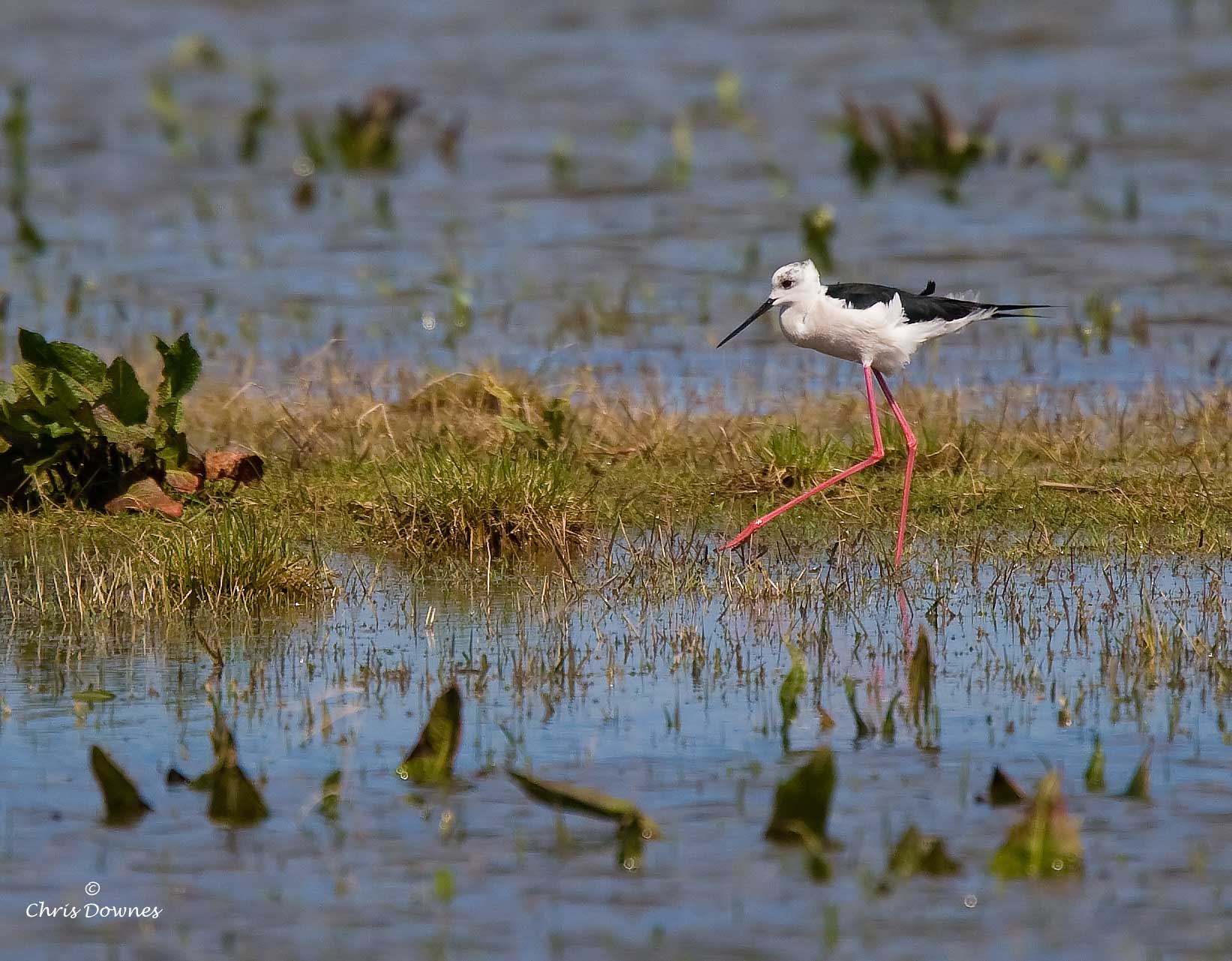
Black-winged Stilt, Frampton Marsh RSPB, Lincolnshire (Photo: Chris Downes)
A first-summer American Golden Plover at Reenroe (Kerry) from 28th was the first record for the Iveragh Peninsula — it seems amazing to think that this peninsula had not hosted a Nearctic wader until 2011! Always drawing crowds these days are Kentish Plovers, and a female at Ferrybridge (Dorset) on 2nd proved no exception. Although last week's bird in Herefordshire had moved on, a Pectoral Sandpiper appeared at Loch Gruinart, Islay (Argyll) on 26th–27th, while the first few Temminck's Stints of 2012 appeared on 2nd. The first Red-necked Phalarope of the year was an unexpected find in deepest Radnorshire, at Llanfighangel-Nant-Melan from 30th.
Up in Scotland, the Greater Yellowlegs remained at Loch of Strathbeg (Aberdeenshire) all week, while the ever-peachier pair of Long-billed Dowitchers were also still at Meare Heath (Somerset) and a third remained at Bannow Bay (Wexford) to 29th.
In what must be one of the best spring showings of the species for several years, upwards of 17 Wrynecks were found along the east coast from Dungeness north to Fair Isle, the latter hosting two birds on 1st. The pick of the bunch were lingering individuals at Barns Ness (Lothian) and Holy Island (Northumberland) from 27th, while twos were recorded at Minsmere (Suffolk) and on the Farne Islands (Northumberland).

Wryneck, Holy Island, Northumberland (Photo: Colin W. Pears)
Three Short-toed Larks appeared on 2nd, two on Scilly and a third at Rhosneigr (Anglesey). A male Citrine Wagtail spent about half an hour at West Runton (Norfolk) on 30th before continuing off west, while an Olive-backed Pipit at Filey (N Yorks) the same day was only belatedly reported.

Olive-backed Pipit, Filey, North Yorkshire (Photo: Mark Pearson)
It also proved a productive week for Red-rumped Swallows, with at least seven recorded: confiding birds spent a couple of days at Far Ings (Lincs) and Bowesfield Marsh (Cleveland) respectively — the latter a county tick for most — and three appeared on 2nd. Other exciting spring overshoots included a Tawny Pipit in Kent, Richard's Pipit in Devon, three Alpine Swifts, four Serins, five male Golden Orioles and six Hoopoes. A couple of unseasonable Siberian Stonechat records concerned a male on Holy Island (Northumberland) on 30th, and another at Cromer (Norfolk) briefly the following morning. A Bluethroat was on Fair Isle on 1st, while a Red-breasted Flycatcher reached Blakeney Point (Norfolk) the following day.
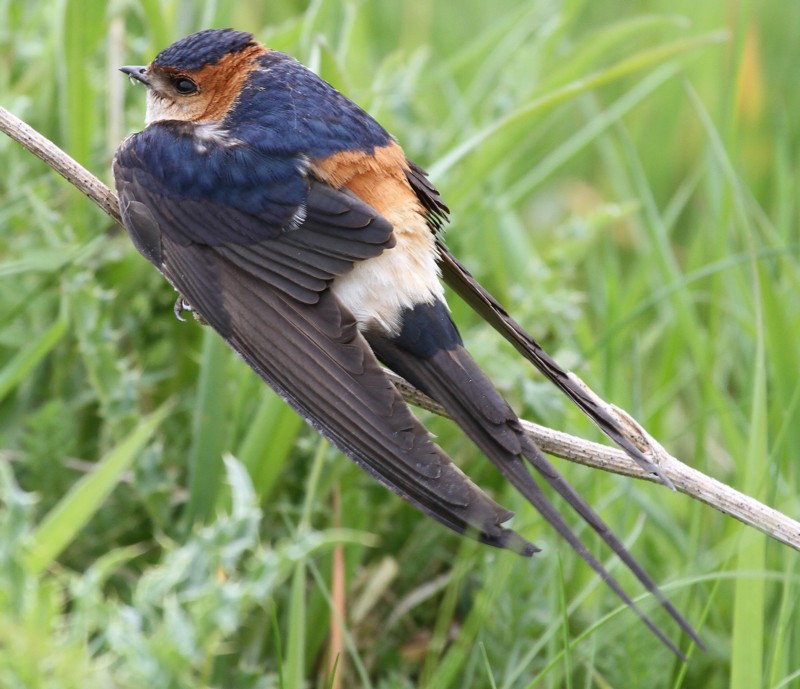
Red-rumped Swallow, Bowesfield Marsh, Cleveland (Photo: Mick Brennan)
Kent also scored the first Melodious Warbler of the year, a male spending most of 1st singing in the lighthouse garden at Dungeness. Rather out of the blue came a report that the Hume's Leaf Warbler was still in Dorset on 26th, while a report of a possible Iberian Chiffchaff singing at Coombe Hill Meadows (Glos) on 30th and 2nd was added to this year's ever-growing list of candidates.

Melodious Warbler, Dungeness, Kent (Photo: Martin Casemore)
In what has been a very poor spring for the species, Woodchat Shrikes at Cape Cornwall from 30th and on Bryher (Scilly) on 2nd were welcome. The female Red-backed Shrike at Mizen Head (Cork) on 1st was early, while a Great Grey found near Sheffield (S Yorks) was the opposite. A possible Lesser Grey Shrike was reported once, and once only, from Dulas Bay (Anglesey) on 30th.
Given how rare the species is in spring these days, a male Ortolan scrubbing around on the shingle at Dungeness on 30th was a notable record in itself. Just along the coast, a bright Little Bunting was trapped and ringed at Sandwich Bay, and was even generous enough to spend the rest of the day in the vicinity.

Ortolan Bunting, Dungeness BO, Kent (Photo: Martin Casemore)

Little Bunting, Sandwich Bay, Kent (Photo: Steve Ashton)
Photo of the Week

Swallow, Aylburton Warth, Gloucestershire (Photo: Lewis Thomson)
Every year at this time, the return of hirundines to Britain prompts the braver bird photographers to resume their attempts to capture these rapid fliers in their element. In fact, the main challenge comes not from the speed of their flight, but from the erratic paths they take, making it difficult for photographers to keep their cameras pointed directly at the birds and difficult for their cameras to autofocus on such unpredictable targets. Autofocus systems fare better when their targets are isolated against a plain sky, but that can lead to relatively boring images with no 'sense of place'. It's unusual to see an image of a flying hirundine in an environmental setting, but that has been achieved this week by Lewis Thomson with his superb action shot of a Swallow swooping centimetres above a grassy pool. The low shooting angle creates an eye-level connection with the oncoming bird, whilst the shallow depth of field resulting from full-aperture shooting throws both foreground and background out of focus to isolate the bird beautifully from the rich green backdrop. A dynamic pose with outstretched tail streamers rounds off an excellent flight shot.
Other notable photos
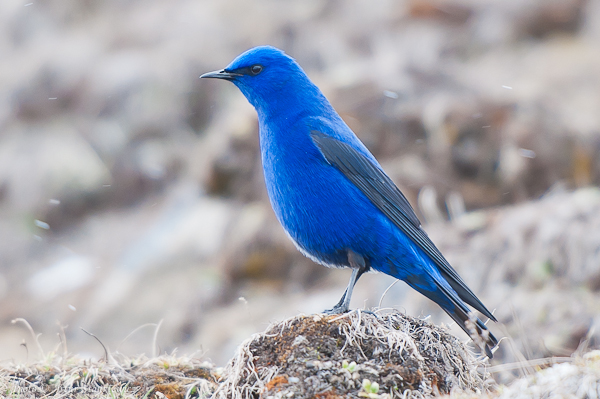
Grandala, Nepal (Photo: Artur Stankiewicz)

Northern Hawk Owl, Norway (Photo: Tristan Reid)

Common Swift, Staines Reservoirs, Surrey (Photo: Ian Curran)

Linnet, North Wirral, Cheshire (Photo: Richard Steel)

Wren, Kirkby on Bain GPs, Lincolnshire (Photo: anon)

Pied Flycatcher, undisclosed site, Powys (Photo: Karen Summers)
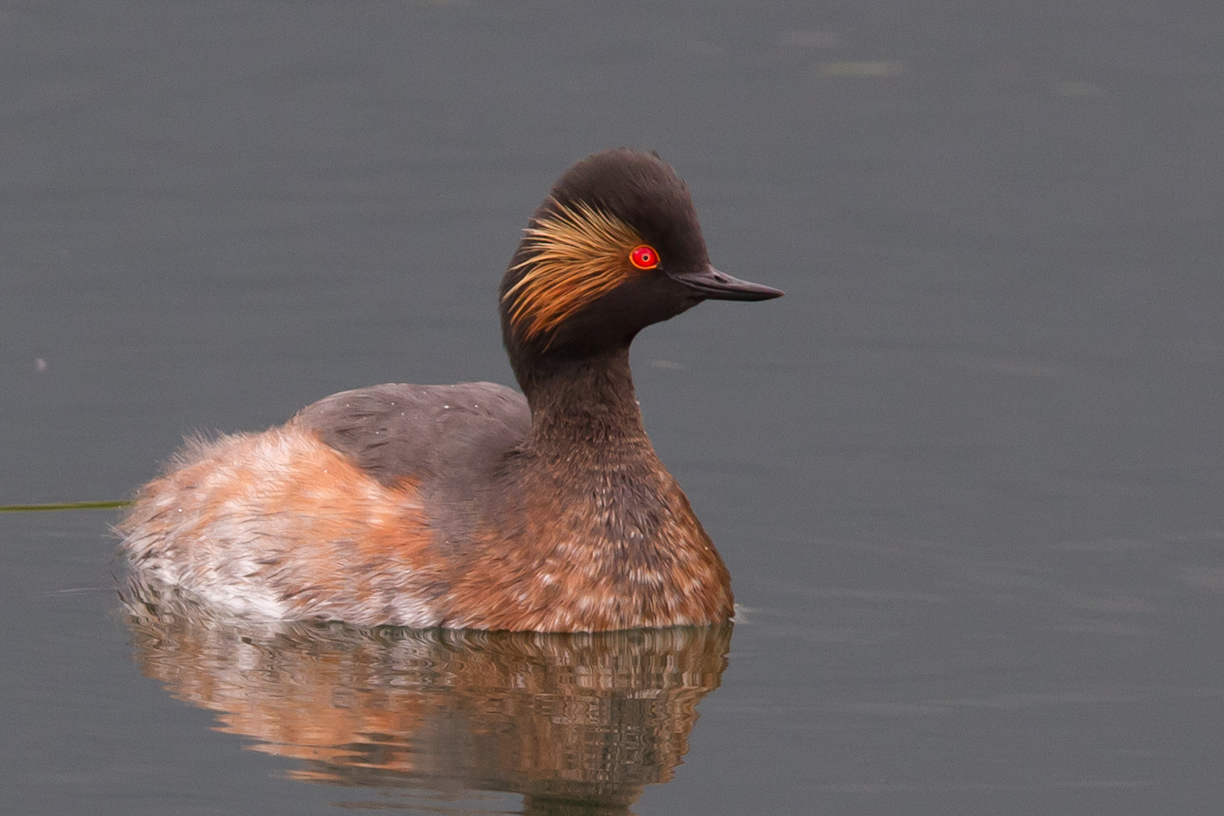
Black-necked Grebe, Farmoor Reservoir, Oxfordshire (Photo: Roger Wyatt)

Great Crested Grebe, undisclosed site, Lancashire (Photo: Brian Rafferty)

Greylag Goose, Waters' Edge CP, Lincolnshire (Photo: Mandy West)

Northern Wheatear, undisclosed site, Shropshire (Photo: Dave Barnes)

Whinchat, Malta (Photo: Natalino Fenech)

Common Snipe, Langdon Beck, Durham (Photo: Ben Andrew)

Common Redstart, Gilfach Farm NR, Powys (Photo: Kev Joynes)

Lesser Redpoll, Rhayader, Powys (Photo: Bob Jones)

Ring Ouzel, Sumburgh, Mainland, Shetland (Photo: James Wood)

House Finch, United States (Photo: Tom Ingram)


